There are some expensive aquarium fish species. They justify their cost for many reasons. Like, some species are rare and have a high demand. Some others beat others in beauty, and others are difficult to catch. Here are 10 of the most expensive fish in the aquarium, with basic profile information and interesting facts.
Content Table
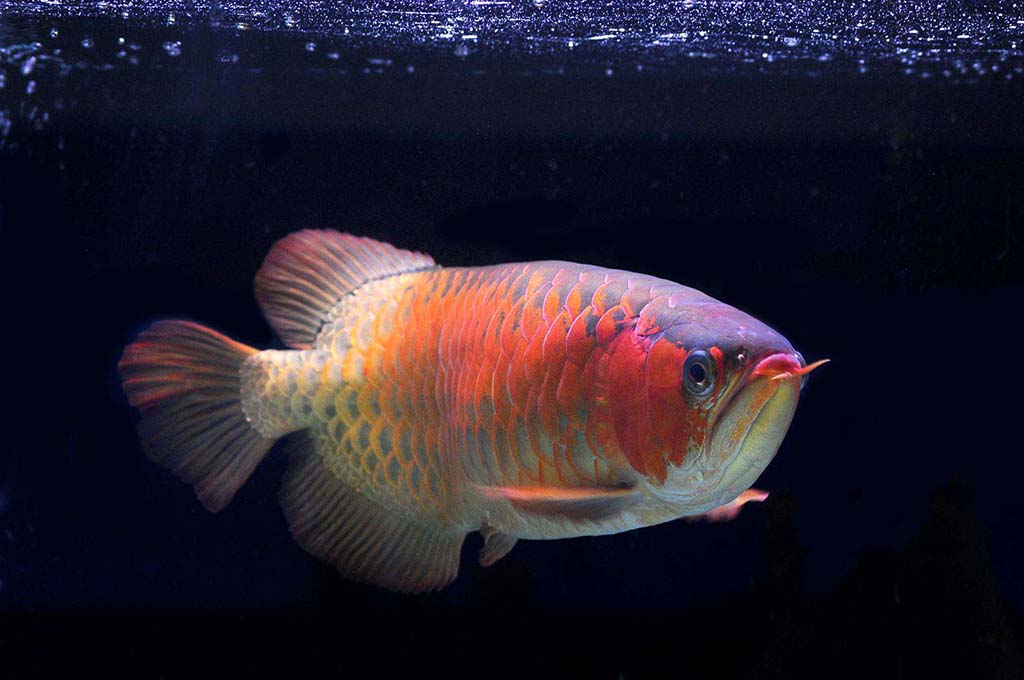
The most expensive aquarium fish
What Is The Most Expensive Aquarium Fish?
The Asian Arowana is the most expensive fish. It’s also known as Dragon Fish. This goldmine lives in the freshwater waters of Southeast Asia, i.e., Cambodia, Malaysia, Indonesia, Thailand, and Vietnam. It requires a large aquarium as it can grow up to 3 feet.
Variants
There are various variants of this beautiful fish available. It includes:
| Green Arowana | Super Red Arowana | Red Tail Arowana |
| Golden Arowana | Cross Back Golden Arowana | |
Why is it so expensive?
Here are some reasons for their high price.
Rare
Their habitat is getting depleted, which is making them rare, resulting in high prices.
Coloration and Shape
Their interesting color and snout shape make them attractive. This attractiveness also gives rise to demand. These factors also fuel the cost of this rare creature.
Muths
Many myths are associated with arowana, i.e., good luck, deterring evil, bringing health, and inducing happiness among family members. These beliefs also give rise to its demand.
Top 10 Most Expensive Aquarium Fish in the World
Some aquarium fish are expensive to keep in an aquarium. It might be due to their rarity, habitat at challenging depths, or their availability in only specific regions. Here are the 10 most expensive fish in the aquarium.
Platinum Arowana
| It’s the most expensive aquarium fish with a long, beautiful, dragon-like body and a colorful appearance. These are Southeast Asian breeds that usually make the slow rivers, flooded forests, and swamps their home. They are also present in South American countries. They live in small groups, and males have territorial behavior. Platinum arowanas are nocturnal. | 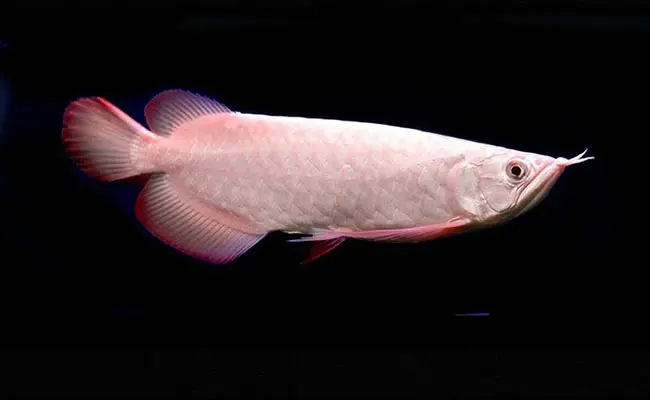 |
| Feature | Value |
| Scientific name | Osteoglossum bicirrhosum |
| Common Name | Dragon Fish |
| Lifespan | Average in Wild: 20 to 40 years Average captivity: up to 20 |
| Conservation Status | Endangered |
| Coloration | Almost White and metallic platinum |
| Size | 4 feet |
| Average cost | $400,000 |
| Interesting Facts | They are prehistoric fish. Myths of good luck and others are associated with them. |
Freshwater Polka Dot Stingray
| They have a disc-like oval dotted body. The bottom is grey without dots. Freshwater Polka Dot Stingray is present in the Xingu River basin in Brazil. They are curious and love to move around. When they feel a threat, they move away from that spot. Polka Dot Stingray is are aquarium invertebrate and eats snails and crabs. With nocturnal behavior, they hunt at night and rest during the day. | 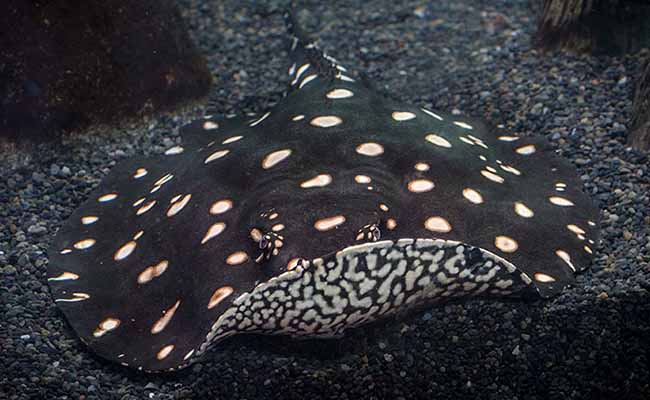 |
| Feature | Value |
| Scientific name | Potamotrygon leopoldi |
| Common Name | Xingu River ray White-blotched river stingray Polka-dot stingray |
| Lifespan | Average in Wild: unknown
Average captivity: between 5 to 10 years |
| Conservation Status | Data is deficient for proper estimation |
| Coloration | Black and brown covered with white spots |
| Size | 18 inches in diameter |
| Average cost | $100,000 |
| Interesting Facts | Polka Dot Stingray has a venomous spine that can cause severe pain. They hunt for food at night and rest during the day by burying themselves under mud. |
Peppermint Angelfish
| These are one of the beautiful species with deep, oval striped bodies. They are present in the eastern central Pacific Ocean. If accurately said, in Rarotonga Island in the Cook Islands. Peppermint Angelfish move around the coral reefs at 55 to 120 meters in the sea. They are difficult to handle due to their territorial behavior. These diurnals usually eat sponges, detritus, tunicates, worms, and crustaceans. | 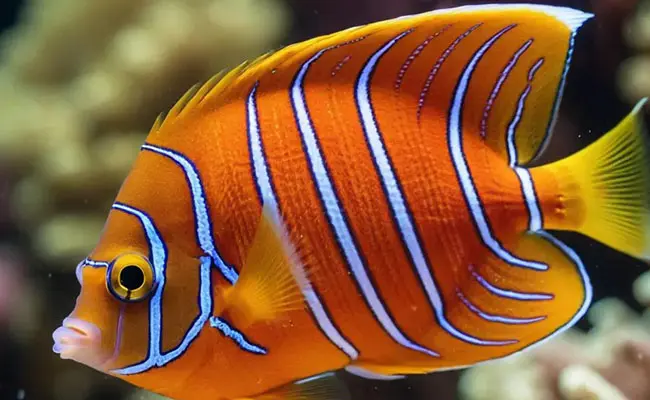 |
| Feature | Value |
| Scientific name | Centropyge boylei |
| Common Name | Centropyge boylei Peppermint angelfish |
| Lifespan | Average captivity: 10–15 years |
| Conservation Status | Least Concern |
| Coloration | Striking red with vertical white strips |
| Size | 2.8 in |
| Average cost | $30,000 |
| Interesting Facts | It’s known as the Holy Grail of marine angel fish. Only excellent divers can catch them as they live at higher ocean depths. |
Masked Angelfish
| They have a cylinder and disc-like body. Masked Angelfish are only present at 200 meters near the Hawaiian islands. At such depth, they move around the coral reefs and possess semi-aggressive behavior. This behavior elevates during the breeding period. They love to eat zooplankton and are usually active during day hours. | 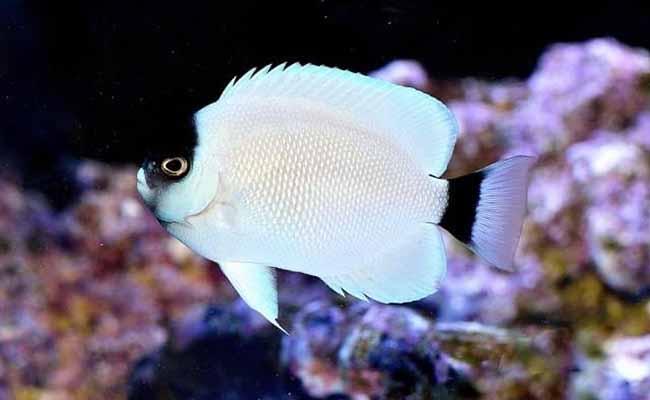 |
| Feature | Value |
| Scientific name | Genicanthus personatus |
| Common Name | Genicanthus personatus
Masked angelfish |
| Lifespan | Average captivity: 10–12 years |
| Conservation Status | Not endangered |
| Coloration | White with black coloration |
| Size | 8.3 in |
| Average cost | $16,000 |
| Interesting facts | In 1975, scientists listed the fish. It’s very rare to see them around the main islands. They live at a depth of 200 feet. |
Bladefin Basslet
| This one of the most expensive aquarium fish has a torpedo-like compressed body. They are present in the West Atlantic Ocean, i.e., the Caribbean and South Carolina regions. Usually, with a peaceful temperament, they roam around the deep reefs at about 100-395 meters. Sometimes, they also become violent. Bladefin Basslet loves to eat live food, i.e., brine and Mysis shrimp. | 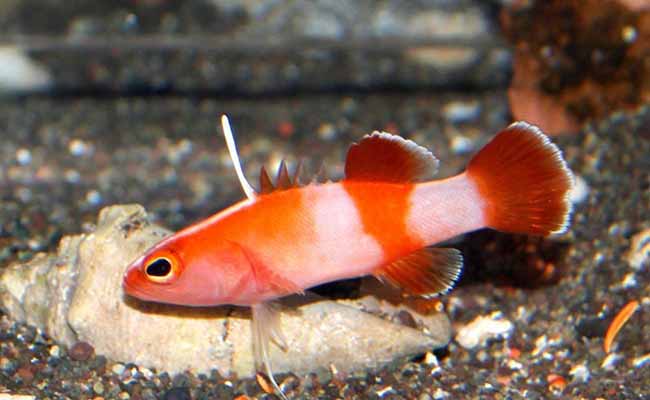 |
| Feature | Value |
| Scientific name | Jeboehlkia glacier |
| Common Name | Bladefin Basslet Long-spined Sea Bass |
| Lifespan | Average captivity: 2 – 4 years |
| Conservation Status | Least concern |
| Coloration | White, pink, or red, with the head and back of the neck is red |
| Size | 3 inches |
| Average cost | $10,000 |
| Interesting Facts | It’s the only member of its genus, i.e., Jeboehlkia. They live at 490 feet. |
Golden Basslet
| With a golden tail, this one of the most expensive fish in the aquarium has a distinctive, regal, grand shape. This rare Golden Basslet lives around the tropical reefs of the Caribbean and tropical Atlantic oceans. They exhibit peaceful behavior. However, during the breeding period, they become aggressive and territorial. Their diet option has various foods, i.e., frozen food to pellets. | 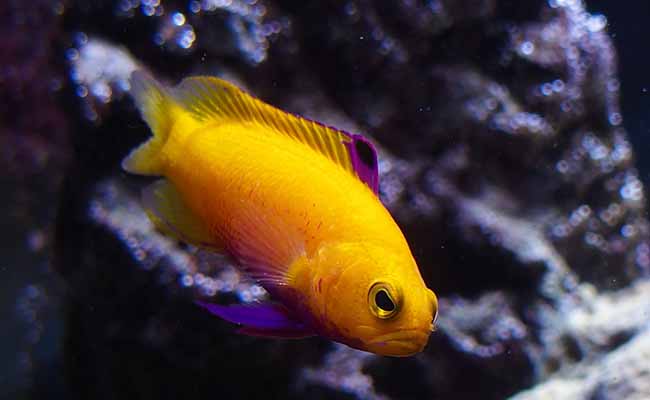 |
| Feature | Value |
| Scientific name | Gramma dejongi |
| Common Name | Golden fairy basslet |
| Lifespan | Up to 15 years |
| Conservation Status | Least concern |
| Coloration | Vivid golden yellow |
| Size | 3 Inches |
| Average cost | $8,000 |
| Interesting Facts | The submarine is used instead of deep-sea divers to catch this species as they live at an unusual depth of 320 feet. It’s one of the challenging species. |
Neptune Grouper
| Their entire body is covered with wart-like bumps. Neptune Grouper lives around the corals of the Indo-Pacific Oceans at 80 meters. There is a distinct color differentiation between male and female species. These nocturnal fish are carnivorous and love to eat crustaceans, mollusks, and many other fish. | 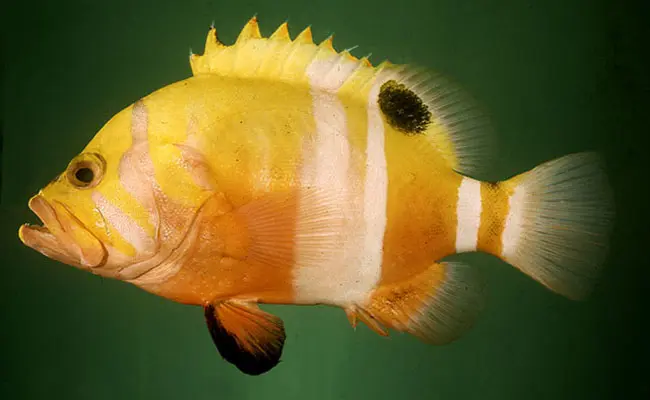 |
| Feature | Value |
| Scientific name | Cephalopholis igarashiensis |
| Common Name | Garish hind Neptune grouper Goldbar grouper Japanese cod |
| Lifespan | 30-50 years |
| Conservation Status | Least concern |
| Coloration | Reddish-orange |
| Size | Usually 10 in |
| Average cost | $6,000 |
| Interesting Facts | Researchers have found their presence at a depth of 820 feet in the ocean. They have an unusual shape to withstand higher pressure. |
Australian Flathead Perch
| These Australian specials have wide mouths, bulging eyes, and compressed heads and bodies. They live in shady caves and crevices on corals of the West Pacific Ocean to the Eastern Indian Ocean. Australian Flathead Perch are food-motivated and love to eat live and frozen food in aquariums. They are usually active during day hours. | 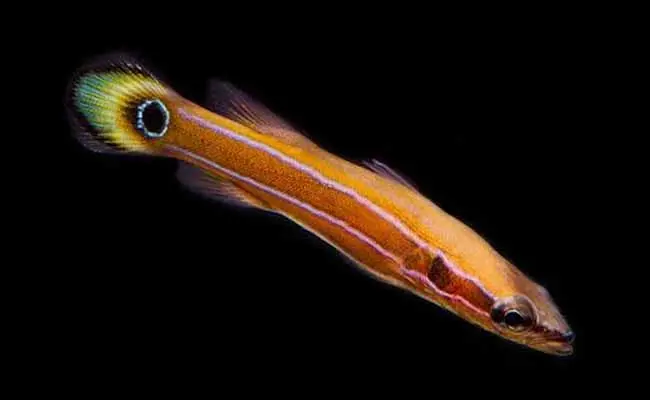 |
| Feature | Value |
| Scientific name | Rainfordia opercularis |
| Common Name | Flathead perch, Rainford’s perch |
| Lifespan | 15-20 years |
| Conservation Status | Least concern |
| Coloration | Dark orange with strips |
| Size | Between 5–7 inches |
| Average cost | Between $1,000 – $5,000 |
| Interesting Facts | It’s the rarest basalt and one of the rarest among all rare species. They hide under mud, only exposing their eyes and upper head. They use their unusual binocular to attack other species. |
Wrought Iron Butterflyfish
| This black social beauty has a box-like body and lives in the central and southern regions of Japan. They usually swim in cool water around rocky corals at 3 to 40 meters depth, and eat Zooplankton and algae. Due to diurnal behavior, Wrought Iron Butterflyfish bury themselves when under stress or at night. | 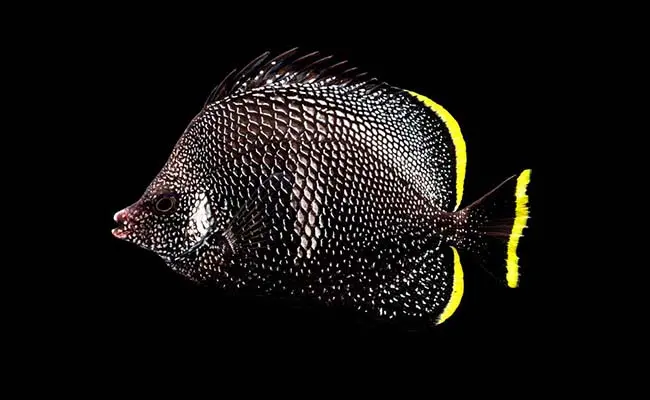 |
| Feature | Value |
| Scientific name | Chaetodon daedalma |
| Common Name | Barberfish |
| Lifespan | Up to 10 years |
| Conservation Status | Least concern |
| Coloration | Black coloration |
| Size | Up to 6 in |
| Average cost | $2,700 |
| Interesting Facts | It is a rarely seen species, unlike the other fish species. They are distinguished from their family due to their appearance. They move in a group of 10. Sometimes, they create a huge fuss, i.e., gang fish. |
Clarion Angelfish
| This strikingly colored fish has a rectangular body shape. The Clarion Angelfish species is only present in the eastern Pacific Ocean, i.e., Revillagigedo Islands and Baja California. They float around the coral reefs and eat both plant and animal-based food. However, in the wild, these diurnal fish love to eat invertebrates. | 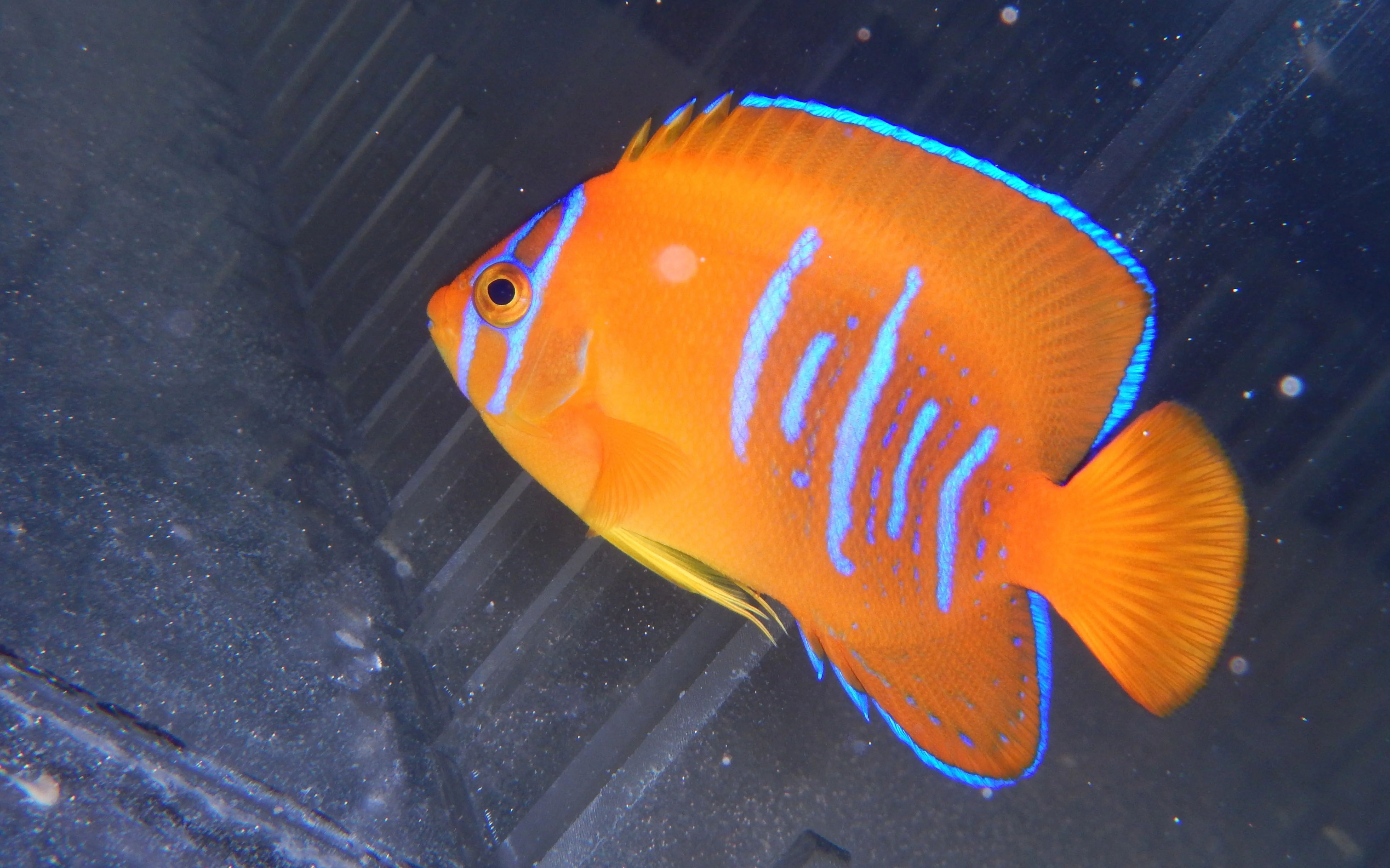 |
| Feature | Value |
| Scientific name | Holacanthus clarionensis |
| Common Name | Clarion angelfish |
| Lifespan | 10-12 years |
| Conservation Status | Vulnerable |
| Coloration | Brownish orange with dark brown head |
| Size | Up to 7.9 in |
| Average cost | Between $2500 to $3000 |
| Interesting Facts | Adults show schooling behavior as they move in a group of 30. They stick to their original habitat, i.e., non-migrant behavior. They can recognize the people who feed them. |
Most Expensive Aquarium Fish To Breed?
Peppermint Angelfish is the most expensive fish to breed in the tank. Here are some reasons.
Rarity
They are rare in nature. Therefore, obtaining this rare beauty for breeding is also quite challenging.
Habitat
It’s hard to create and maintain the exact habitat in aquariums as they live at higher water depths. They require a deep, dark, and highly pressurized environment.
Docile Nature
They have a docile nature and feel stressed in any inconvenient situation.
Breeding Tips
Here are some breeding tips to have a successful Peppermint Angelfish breeding.
| Take at least a 100-gallon tank | Set the proper water parameters |
- Replicate their original habitat by adding plenty of rocks, caves, and hiding spots. It stimulates their breeding process.
- Feed them on various foods, i.e., live, frozen, and flakes, i.e., marine algae, shrimps, and angelfish flakes.
- Obtaining a juvenile and raising them for breeding in a tank is better. At adult age, they will form perfect pairs. These pairs are the most optimal ones for breeding.
- Gradually increase the temperature, i.e., perfect for breeding.
| Parameter | Value |
| Temperature | 76-80°F |
| pH | 8.1-8.4 |
| Salinity | 1.023-1.025 SG |
| Ammonia and Nitrites | 0 ppm |
| Nitrates | <10 ppm |
| Lighting | Low light at 12 12-hour day-night cycle |
- Replicate the dawn and dusk state to stimulate breeding, i.e., set the sunrise and sunset lighting.
- Once they lay and fertilize the eggs, observe them. Replace the eggs in a separate tank.
- Raise the fry in a separate tank with perfect water and other parameters.
- Feed them according to their need.
End of the line
The Asian Arowna is the most expensive aquarium fish. It’s so because of their rarity, beauty, and high demand due to some myths. It’s not a single fish. Many other fish also share this list of the most expensive fish in the aquarium, e.g., Nepture Grouper, Australian Flathead Perch, Clarion Angelfish, etc. The Peppermint Angelfish is the most expensive fish to breed in an aquarium due to its higher difficulty, rarity, and docile nature.
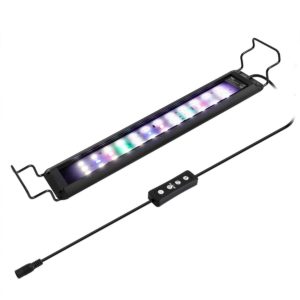
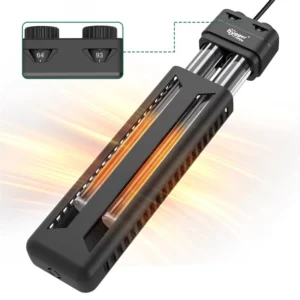
It is so expensive